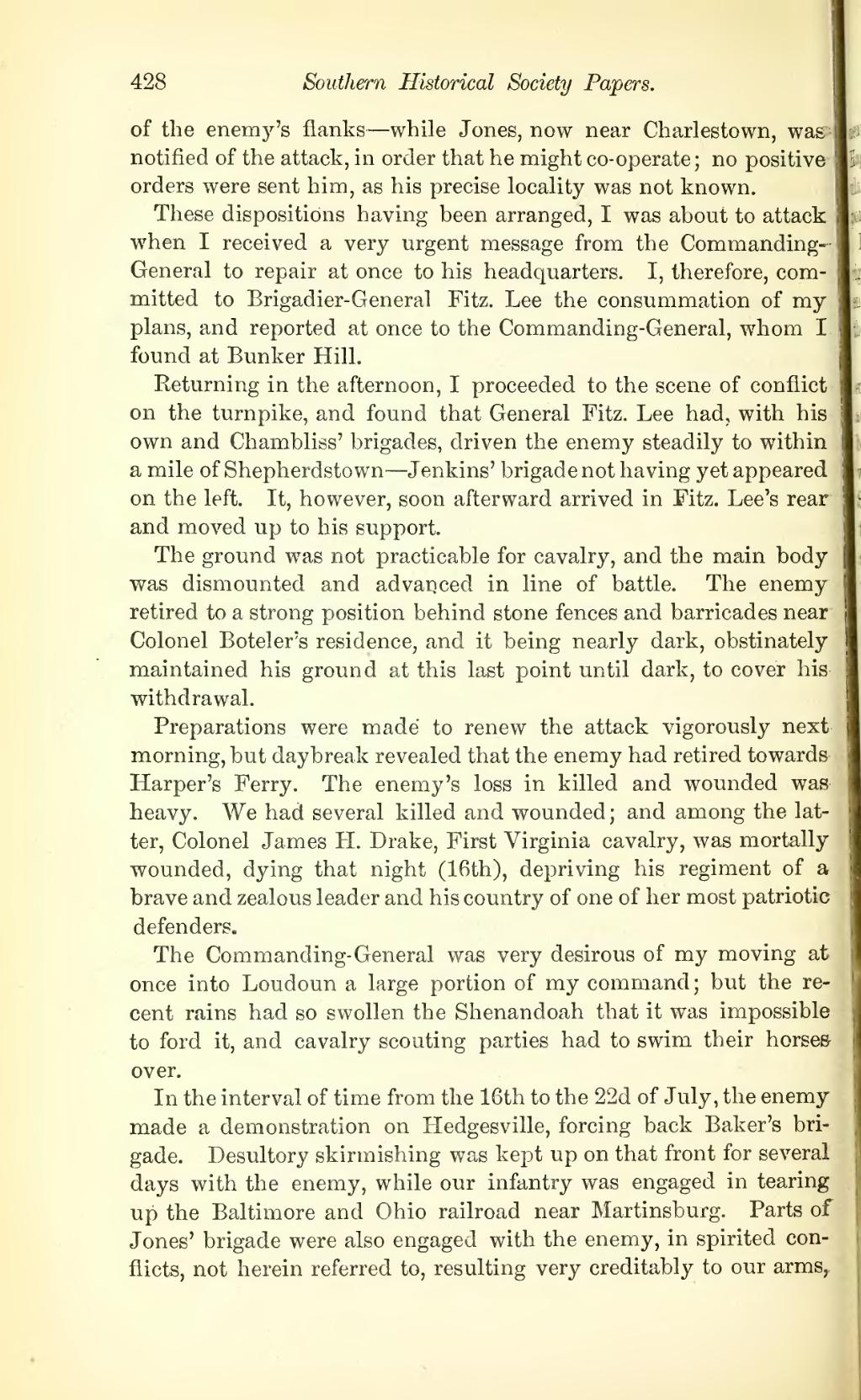of the enemy's flanks—while Jones, now near Charlestown, was notified of the attack, in order that he might co-operate; no positive orders were sent him, as his precise locality was not known.
These dispositions having been arranged, I was about to attack when I received a very urgent message from the Commanding-General to repair at once to his headquarters. I, therefore, committed to Brigadier-General Fitz. Lee the consummation of my plans, and reported at once to the Commanding-General, whom I found at Bunker Hill.
Returning in the afternoon, I proceeded to the scene of conflict on the turnpike, and found that General Fitz. Lee had, with his own and Chambliss' brigades, driven the enemy steadily to within a mile of Shepherdstown—Jenkins' brigade not having yet appeared on the left. It, however, soon afterward arrived in Fitz. Lee's rear and moved up to his support.
The ground was not practicable for cavalry, and the main body was dismounted and advanced in line of battle. The enemy retired to a strong position behind stone fences and barricades near Colonel Boteler's residence, and it being nearly dark, obstinately maintained his ground at this last point until dark, to cover his withdrawal.
Preparations were made to renew the attack vigorously next morning, but daybreak revealed that the enemy had retired towards Harper's Ferry. The enemy's loss in killed and wounded was heavy. We had several killed and wounded; and among the latter, Colonel James H. Drake, First Virginia cavalry, was mortally wounded, dying that night (16th), depriving his regiment of a brave and zealous leader and his country of one of her most patriotic defenders.
The Commanding-General was very desirous of my moving at once into Loudoun a large portion of my command; but the recent rains had so swollen the Shenandoah that it was impossible to ford it, and cavalry scouting parties had to swim their horses over.
In the interval of time from the 16th to the 22d of July, the enemy made a demonstration on Hedgesville, forcing back Baker's brigade. Desultory skirmishing was kept up on that front for several days with the enemy, while our infantry was engaged in tearing up the Baltimore and Ohio railroad near Martinsburg. Parts of Jones' brigade were also engaged with the enemy, in spirited conflicts, not herein referred to, resulting very creditably to our arms,
